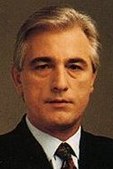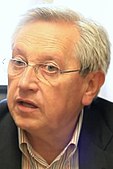1991 Navarrese regional election
| |||||||||||||||||||||||||||||||||||||||||||||||||||||||||||||||||||||||||||
All 50 seats in the Parliament of Navarre 26 seats needed for a majority | |||||||||||||||||||||||||||||||||||||||||||||||||||||||||||||||||||||||||||
|---|---|---|---|---|---|---|---|---|---|---|---|---|---|---|---|---|---|---|---|---|---|---|---|---|---|---|---|---|---|---|---|---|---|---|---|---|---|---|---|---|---|---|---|---|---|---|---|---|---|---|---|---|---|---|---|---|---|---|---|---|---|---|---|---|---|---|---|---|---|---|---|---|---|---|---|
| Opinion polls | |||||||||||||||||||||||||||||||||||||||||||||||||||||||||||||||||||||||||||
| Registered | 414,913 | ||||||||||||||||||||||||||||||||||||||||||||||||||||||||||||||||||||||||||
| Turnout | 276,773 (66.7%) | ||||||||||||||||||||||||||||||||||||||||||||||||||||||||||||||||||||||||||
| |||||||||||||||||||||||||||||||||||||||||||||||||||||||||||||||||||||||||||
| |||||||||||||||||||||||||||||||||||||||||||||||||||||||||||||||||||||||||||
The 1991 Navarrese regional election was held on Sunday, 26 May 1991, to elect the 3rd Parliament of the Chartered Community of Navarre. All 50 seats in the Parliament were up for election. The election was held simultaneously with regional elections in twelve other autonomous communities and local elections all throughout Spain.
Overview[]
Electoral system[]
The Parliament of Navarre was the devolved, unicameral legislature of the Chartered Community of Navarre, having legislative power in regional matters as defined by the Spanish Constitution and the Reintegration and Enhancement of the Foral Regime of Navarre Law, as well as the ability to vote confidence in or withdraw it from a President of the Foral Deputation.[1] Voting was on the basis of universal suffrage, which comprised all nationals over eighteen, registered in Navarre and in full enjoyment of their political rights.
The 50 members of the Parliament of Navarre were elected using the D'Hondt method and a closed list proportional representation, with a threshold of 3 percent of valid votes—which included blank ballots—being applied regionally. Parties not reaching the threshold were not taken into consideration for seat distribution.[2]
The electoral law provided that parties, federations, coalitions and groupings of electors were allowed to present lists of candidates. However, groupings of electors were required to secure the signature of at least 1 percent of the electors registered in Navarre. Electors were barred from signing for more than one list of candidates. Concurrently, parties and federations intending to enter in coalition to take part jointly at an election were required to inform the relevant Electoral Commission within ten days of the election being called.[2][3][4]
Election date[]
The term of the Parliament of Navarre expired four years after the date of its previous election. Legal amendments earlier in 1991 established that elections to the Parliament were to be fixed for the fourth Sunday of May every four years. The previous election was held on 10 June 1987, setting the election date for the Parliament on Sunday, 26 May 1991.[1][2][3][4]
The Parliament of Navarre could not be dissolved before the date of expiry of parliament. In the event of an investiture process failing to elect a regional President within a two-month period from the first ballot, the candidate from the party with the highest number of seats was to be deemed automatically elected.[1]
Opinion polls[]
The table below lists voting intention estimates in reverse chronological order, showing the most recent first and using the dates when the survey fieldwork was done, as opposed to the date of publication. Where the fieldwork dates are unknown, the date of publication is given instead. The highest percentage figure in each polling survey is displayed with its background shaded in the leading party's colour. If a tie ensues, this is applied to the figures with the highest percentages. The "Lead" column on the right shows the percentage-point difference between the parties with the highest percentages in a poll. When available, seat projections determined by the polling organisations are displayed below (or in place of) the percentages in a smaller font; 26 seats were required for an absolute majority in the Parliament of Navarre.
| Polling firm/Commissioner | Fieldwork date | Sample size | Turnout | UDF | EE | PNV | Lead | |||||||
|---|---|---|---|---|---|---|---|---|---|---|---|---|---|---|
| 1991 regional election | 26 May 1991 | N/A | 66.7 | 33.4 19 |
35.0 20 |
11.2 6 |
2.1 0 |
5.5 3 |
[b] | [b] | 2.1 0 |
4.1 2 |
1.1 0 |
1.6 |
| Sigma Dos/El Mundo[p 1][p 2] | 18 May 1991 | ? | ? | 29.9 17 |
32.3 17/18 |
12.0 7/8 |
– | 6.0 3 |
[b] | [b] | 3.9 1 |
5.3 2/3 |
– | 2.4 |
| CIES/Diario de Navarra[p 3][p 4] | 9–16 May 1991 | 1,447 | 68–70 | 30.0– 32.0 17/18 |
33.0– 35.0 19/21 |
11.0– 12.0 6/7 |
2.5– 3.5 0/1 |
5.5– 6.5 3/4 |
[b] | [b] | 2.5– 3.5 0/1 |
5.0– 6.0 2/3 |
2.0– 3.0 0/1 |
3.0 |
| Metra Seis/El Independiente[p 1][p 2] | 12 May 1991 | ? | ? | 26.8 15 |
33.5 19 |
12.4 7 |
4.2 2 |
6.4 3 |
[b] | [b] | 3.2 1 |
4.7 2 |
3.3 1 |
6.7 |
| Demoscopia/El País[p 1][p 2][p 5][p 6] | 4–7 May 1991 | 500 | ? | 27.5 15 |
40.4 22 |
11.7 6 |
4.6 2 |
4.4 2 |
[b] | [b] | 1.9 0 |
6.0 3 |
1.8 0 |
12.9 |
| CIES/Diario de Navarra[p 7] | 22–29 Apr 1991 | 1,005 | 68 | 32.0 18 |
34.2 19/20 |
11.0 6 |
4.0 1/2 |
5.0 3 |
[b] | [b] | 3.5 0/1 |
4.8 2/3 |
– | 2.2 |
| 1989 general election | 29 Oct 1989 | N/A | 68.5 | 31.2 (17) |
33.2 (18) |
11.0 (6) |
7.0 (4) |
4.8 (2) |
[b] | [b] | 2.9 (0) |
5.7 (3) |
0.9 (0) |
2.0 |
| 1989 EP election | 15 Jun 1989 | N/A | 57.3 | 28.6 (17) |
27.1 (16) |
13.8 (8) |
5.4 (3) |
6.2 (3) |
[b] | [b] | 3.7 (2) |
3.1 (1) |
1.1 (0) |
1.5 |
| 1987 regional election | 10 Jun 1987 | N/A | 72.9 | 27.7 15 |
24.5 14 |
13.5 7 |
7.4 4 |
7.0 4 |
6.2 3 |
4.2 2 |
3.4 1 |
1.3 0 |
0.9 0 |
3.2 |
Results[]
 | ||||||
| Parties and coalitions | Popular vote | Seats | ||||
|---|---|---|---|---|---|---|
| Votes | % | ±pp | Total | +/− | ||
| Navarrese People's Union (UPN)1 | 96,005 | 34.95 | –0.01 | 20 | +1 | |
| Socialist Party of Navarre (PSN–PSOE) | 91,645 | 33.36 | +5.68 | 19 | +4 | |
| Popular Unity (HB) | 30,762 | 11.20 | –2.26 | 6 | –1 | |
| Basque Solidarity (EA) | 15,170 | 5.52 | –1.48 | 3 | –1 | |
| United Left (IU) | 11,167 | 4.07 | +2.73 | 2 | +2 | |
| Assembly (B) | 6,543 | 2.38 | +0.31 | 0 | ±0 | |
| Basque Country Left (EE) | 5,824 | 2.12 | –1.27 | 0 | –1 | |
| Democratic and Social Centre (CDS) | 5,650 | 2.06 | –5.36 | 0 | –4 | |
| Livestock Agricultural Party (PAG) | 3,855 | 1.40 | New | 0 | ±0 | |
| Basque Nationalist Party (EAJ/PNV) | 3,071 | 1.12 | +0.18 | 0 | ±0 | |
| Carlist Party (PC) | 1,353 | 0.49 | New | 0 | ±0 | |
| Blank ballots | 3,637 | 1.32 | –0.07 | |||
| Total | 274,682 | 50 | ±0 | |||
| Valid votes | 274,682 | 99.24 | +0.40 | |||
| Invalid votes | 2,091 | 0.76 | –0.40 | |||
| Votes cast / turnout | 276,773 | 66.71 | –6.19 | |||
| Abstentions | 138,140 | 33.29 | +6.19 | |||
| Registered voters | 414,913 | |||||
| Sources[5][6] | ||||||
Footnotes:
| ||||||
Aftermath[]
Investiture processes to elect the President of the Government of Navarre required for an absolute majority—more than half the votes cast—to be obtained in the first ballot. If unsuccessful, a new ballot would be held 48 hours later under the same majority requirement, with successive votes requiring only of a simple majority—more affirmative than negative votes—to succeed. If such majorities were not achieved, successive candidate proposals would be processed under the same procedure. In the event of the investiture process failing to elect a regional President within a two-month period from the first ballot, the candidate from the party with the highest number of seats was deemed to be automatically elected.[1]
As a result of the investiture process failing to provide a regional President within two months from the first ballot, Juan Cruz Alli was automatically elected on 18 September 1991 and officially sworn into office on 23 September.
| Investiture Juan Cruz Alli (UPN) | |||||
| Ballot → | 18 July 1991[c] | 20 July 1991[c] | 22 July 1991 | 24 July 1991 | |
|---|---|---|---|---|---|
| Required majority → | 26 out of 50 |
26 out of 50 |
Simple |
Simple | |
Yes
|
20 / 50
|
20 / 50
|
20 / 50
|
20 / 50
| |
24 / 50
|
24 / 50
|
30 / 50
|
30 / 50
| ||
| Abstentions | 0 / 50
|
0 / 50
|
0 / 50
|
0 / 50
| |
| Absentees | 0 / 50
|
0 / 50
|
0 / 50
|
0 / 50
| |
| Sources[6] | |||||
| Investiture Gabriel Urralburu (PSN) | |||||
| Ballot → | 8 August 1991 | 10 August 1991 | 12 August 1991 | 14 August 1991 | |
|---|---|---|---|---|---|
| Required majority → | 26 out of 50 |
26 out of 50 |
Simple |
Simple | |
22 / 50
|
22 / 50
|
22 / 50
|
22 / 50
| ||
26 / 50
|
26 / 50
|
26 / 50
|
26 / 50
| ||
Abstentions
|
2 / 50
|
2 / 50
|
2 / 50
|
1 / 50
| |
Absentees
|
0 / 50
|
0 / 50
|
0 / 50
|
1 / 50
| |
| Sources[6] | |||||
Notes[]
References[]
- Opinion poll sources
- ^ a b c "Seis comunidades dependen de pactos". ABC (in Spanish). 20 May 1991.
- ^ a b c "Las elecciones de 26-5-91". CEPC (in Spanish). August 1991.
- ^ "UPN será el partido más votado y PSOE el segundo, pese a su fuerte subida". Diario de Navarra (in Spanish). 19 May 1991.
- ^ "Sondeos electorales CIES" (PDF). CIES (in Spanish). 22 May 2011.
- ^ "Una fusión con buenos dividendos". El País (in Spanish). 19 May 1991.
- ^ "Ficha técnica". El País (in Spanish). 19 May 1991.
- ^ "Suben UPN y PSOE, y el partido regionalista será la lista más votada". Diario de Navarra (in Spanish). 5 May 1991.
- Other
- ^ a b "General Electoral System Organic Law of 1985". Organic Law No. 5 of 19 June 1985. Official State Gazette (in Spanish). Retrieved 28 December 2016.
- ^ a b "Representation of the people Institutional Act". www.juntaelectoralcentral.es. Central Electoral Commission. Retrieved 16 June 2017.
- ^ "III Legislature (1991-1995)". parlamentodenavarra.es (in Spanish). Parliament of Navarre. Retrieved 29 September 2017.
- ^ a b c "Elecciones al Parlamento de Navarra (Nafarroako Parlamentua) (1979 - 2019)". Historia Electoral.com (in Spanish). Retrieved 29 September 2017.
- 1991 in Navarre
- 1991 regional elections in Spain
- Regional elections in Navarre
- May 1991 events in Europe


